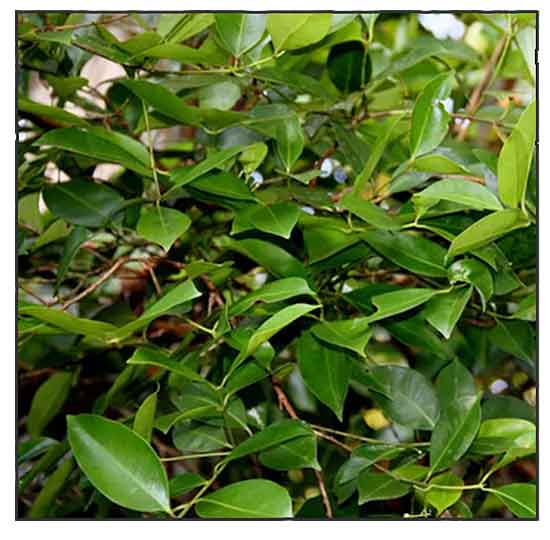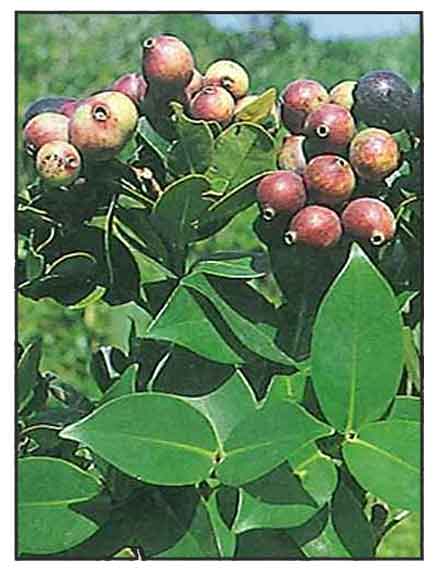
Family • Myrtaceae
Panglomboien
Malaruhat
Syzygium simile (Merr.) Merr.
Lan yu
| Scientific names | Common names |
| Calyptranthes ramiflora Blanco | Arang (Mangyan) |
| Eugenia similis Merr. | Malaruhat (Tagalog) |
| Syzygium lanyuense C.E.Chang | Muning (Bisaya) |
| Syzygium latifolium Blanco | Panglomgboien (Iloko) |
| Syzygium simile (Merr.) Merr. | Panglomboien (Tag.) |
| Pulayo puti (Tag.) | |
| Syzygium simile is an accepted species. KEW: Plants of the World Online | |
| Other vernacular names |
| TAIWAN: Lan yu, Lu dao, Huoshao dao, Lan yu chi nan. |
Botany Syzygium simile is a tree, to 8 m tall. Branchlets light brown, slender; older branchlets dark brown, terete, glabrous. Petiole ca. 1 cm; leaf blade oblanceolate, obovate-elliptic, or oblong, 7-8 × 3.5-4 cm, subleathery, adaxially glandular punctate, secondary veins 8-9 on each side of midvein, ca. 8 mm apart, and inconspicuous, intramarginal veins 2-3 mm from margin, base attenuate to cuneate, margins slightly revolute, apex cuspidate. Inflorescences axillary, cymes 3-4 cm, few-flowered; branches short, opposite. Flowers pink, ca. 3 mm. Hypanthium campanulate. Calyx lobes broadly triangular, very short. Petals coherent. Stamens numerous, ca. 3 mm; anthers elliptic, small. Style ca. 3 mm; stigma sharp. Fruit blackish purple, globose, ca. 3 mm in diam., apically with a persistent calyx rim. (Flora of China)
Properties Studies Availability |
May 2023
![]()
 |
| PHOTOS / ILLUSTRATIONS |
| IMAGE SOURCE: Photograph: Syzygium simile / CC BY-NC 4.0 International / click on image to go to source page / TaiEOL |
| OTHER IMAGE SOURCE: Photo: Malaruhat - © FEED / click on image to go to source page / FEED |
Additional
Sources and Suggested Readings |
• |
DOI: It is not uncommon for links on studies/sources to change. Copying and pasting the information on the search window or using the DOI (if available) will often redirect to the new link page. (Citing and Using a (DOI) Digital Object Identifier) |
| List of Understudied Philippine Medicinal Plants |
• |
 |



